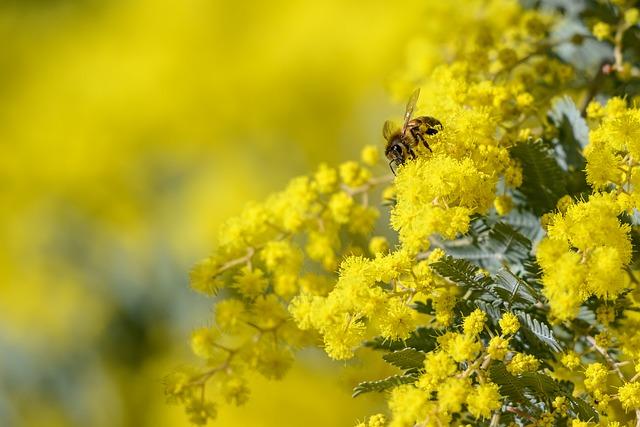On a frosty Christmas Eve in Victorian England, the air was thick with the scent of roasting meats and spiced pies. Families gathered around the hearth, their laughter mingling with the crackling fire. The centerpiece of the feast was a grand roast goose, its skin golden and crisp, surrounded by a medley of root vegetables. Mince pies, filled with rich fruits and spices, awaited for dessert, while steaming mugs of mulled wine warmed chilly hands. As the clock struck midnight, the table overflowed with festive cheer, a true reflection of the season’s spirit.
Table of Contents
- Exploring Traditional Victorian Christmas Feasts
- The Role of Seasonal Ingredients in Festive Menus
- Delicacies and Desserts: Sweet Treats of the Victorian Era
- Modern Twists on Classic Victorian Christmas Dishes
- Q&A

Exploring Traditional Victorian Christmas Feasts
During the Victorian era, Christmas dinner was a grand affair, steeped in tradition and brimming with an array of sumptuous dishes that reflected the era’s culinary opulence. The centerpiece of the feast was often a magnificent roast, with **turkey** and **goose** being the most popular choices. These birds were typically stuffed with a savory mixture of breadcrumbs, herbs, and spices, then roasted to golden perfection. Accompanying the main dish were an assortment of **seasonal vegetables**, such as **brussels sprouts**, **carrots**, and **parsnips**, often glazed or roasted to enhance their natural sweetness. The table would also feature **Yorkshire pudding** and **stuffing**, adding to the hearty nature of the meal.
As the meal progressed, diners would indulge in a variety of rich and decadent desserts that showcased the Victorians’ love for sweets. **Christmas pudding**, a dense and fruity concoction made with suet, dried fruits, and spices, was a must-have, often flambéed with brandy before serving. Other popular treats included **mince pies**, filled with a mixture of dried fruits and spices, and **trifle**, a layered dessert of sponge cake, custard, and fruit. To wash it all down, families would toast with **mulled wine** or **spiced cider**, creating a warm and festive atmosphere that encapsulated the spirit of the season. The elaborate spread not only satisfied the palate but also served as a symbol of prosperity and togetherness during the holiday celebrations.

The Role of Seasonal Ingredients in Festive Menus
During the Victorian era, the festive season was a time of abundance and celebration, with seasonal ingredients playing a pivotal role in the Christmas dinner spread. The cold winter months brought a bounty of hearty produce, which was often showcased in elaborate dishes. **Root vegetables** such as carrots, parsnips, and turnips were staples, providing warmth and sustenance. Additionally, **cabbage** and **brussels sprouts** made their appearance, often prepared with rich sauces or served alongside roasted meats. The use of **seasonal herbs** like sage and thyme not only enhanced flavors but also reflected the Victorian penchant for culinary sophistication.
Meat was the centerpiece of the Christmas feast, with **roast turkey**, **goose**, and even **venison** gracing the tables of the well-to-do. These meats were often accompanied by **stuffings** made from seasonal ingredients, such as chestnuts and apples, which added a delightful sweetness to the savory dishes. Desserts were equally extravagant, featuring **mince pies** filled with dried fruits and spices, and **Christmas pudding**, a rich concoction of suet, flour, and seasonal fruits, often flambéed before serving. The emphasis on seasonal ingredients not only celebrated the harvest but also fostered a sense of community and tradition, as families gathered to enjoy the fruits of the season together.

Delicacies and Desserts: Sweet Treats of the Victorian Era
The Victorian era was a time of culinary innovation and indulgence, especially during the festive season. Christmas dinner was not complete without an array of **delicacies and desserts** that delighted the senses and showcased the era’s penchant for extravagance. Among the most popular sweet treats were **mince pies**, filled with a rich mixture of dried fruits, spices, and sometimes even a splash of brandy. These pies were often served warm, their flaky crusts enveloping a fragrant filling that evoked the spirit of the season. Another staple was the **Christmas pudding**, a dense, spiced dessert made from suet, breadcrumbs, and an assortment of fruits, traditionally steamed and served with a flourish of brandy sauce, igniting the festive atmosphere with its dramatic presentation.
In addition to these iconic dishes, the Victorians had a flair for creating visually stunning confections that were as much a feast for the eyes as for the palate. **Marzipan**, a sweet almond paste, was molded into intricate shapes, often resembling fruits or animals, and adorned the tables as both decoration and dessert. **Trifle**, a layered dessert of sponge cake, custard, and fruit, was another favorite, showcasing the era’s love for colorful presentations. The use of **sugar** in various forms, from candied fruits to elaborate sugar sculptures, reflected the growing accessibility of this once-rare commodity, allowing families to indulge in sweet creations that were both delicious and a testament to their social status. Each of these treats not only satisfied the sweet tooth but also played a significant role in the festive gatherings that defined Victorian Christmas celebrations.

Modern Twists on Classic Victorian Christmas Dishes
As we delve into the festive spirit of the Victorian era, it’s fascinating to see how traditional dishes can be reimagined for modern palates. One classic dish, the roast goose, was a staple on Victorian tables, often accompanied by rich gravies and fruity stuffing. Today, we can give this dish a contemporary twist by opting for herb-infused roast duck, paired with a zesty orange glaze and served alongside a vibrant cranberry and pomegranate relish. This not only honors the original flavors but also adds a refreshing brightness that complements the richness of the meat.
Another beloved Victorian treat was the Christmas pudding, a dense and spiced dessert that often contained suet and was traditionally doused in brandy before being set alight. To modernize this festive favorite, consider crafting a vegan spiced cake that incorporates dried fruits, nuts, and a hint of maple syrup for sweetness. Topped with a light coconut cream frosting and garnished with candied citrus peels, this version retains the essence of the original while catering to contemporary dietary preferences. The result is a delightful dessert that captures the warmth and nostalgia of a Victorian Christmas, reinterpreted for today’s celebrations.
Q&A
-
What was the main dish served at Victorian Christmas dinners?
The centerpiece of a Victorian Christmas dinner was often a grand roast, typically turkey or goose. In wealthier households, venison or peacock might also make an appearance, showcasing the family’s affluence.
-
What side dishes accompanied the main course?
Victorian Christmas dinners featured a variety of side dishes, including stuffing, roasted vegetables like carrots and parsnips, and potatoes. Additionally, bread sauce and gravy were essential for enhancing the flavors of the main dish.
-
Were there any traditional desserts served?
Yes, desserts played a significant role in the festive meal. The most iconic was the Christmas pudding, often made with dried fruits and spices, and traditionally served with a sprig of holly on top. Other popular sweets included mince pies and trifle.
-
What beverages were commonly enjoyed during the meal?
Victorians enjoyed a range of beverages during Christmas dinner, including mulled wine, port, and punch. For non-alcoholic options, cider and lemonade were popular choices, especially for children.
As the festive season unfolds, the Victorian Christmas dinner invites us to savor a rich tapestry of flavors and traditions. From succulent roast meats to decadent desserts, these culinary delights remind us of the warmth and joy of shared celebrations.

大家好,我是彼得潘,專業的手法身體治療師。我喜歡探索和研究各種主題,並透過與人工智慧的合作分享專業、實用、有趣的文章。我們定期進行人工審核,以確保內容的準確性。如果您發現文章中有任何不準確的地方,請隨時與我們聯繫,我們會及時糾正。您可以透過 [email protected] 與我們聯繫。



